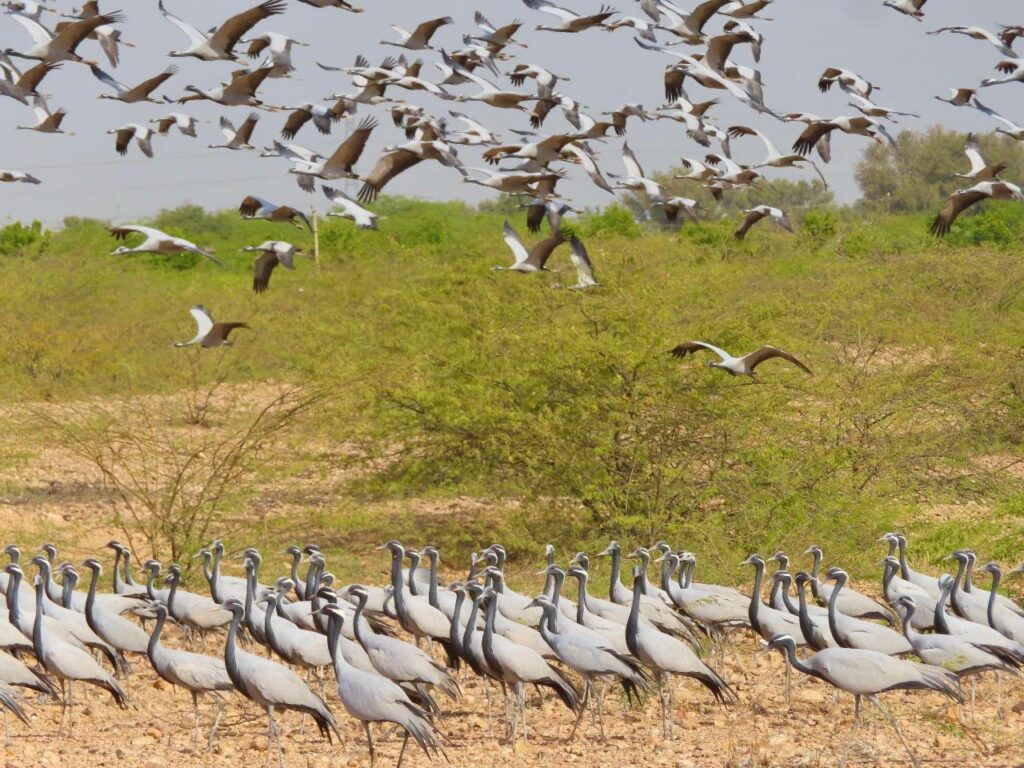India has taken a new step toward environmental preservation. Two more wetlands—Khichan in Phalodi and Menar in Udaipur, both located in Rajasthan—have now been designated as Ramsar Sites. With this, the total number of Ramsar Sites in India has risen to 91.
This move marks steady progress in India’s commitment to conserving critical wetland ecosystems. It also reinforces the country’s growing influence in global environmental leadership.
What Makes Ramsar Status Important?
The Ramsar Convention, signed in 1971, aims to protect and sustainably use wetlands worldwide. Ramsar Sites are recognized for their rich biodiversity, ecological role, or cultural significance.
Both Khichan and Menar are key locations for migratory birds. In particular, Khichan attracts thousands of Demoiselle Cranes, making it a popular birdwatching site. Similarly, Menar is known as Rajasthan’s “Bird Village”, offering shelter to numerous species.
These new designations help protect the delicate balance of wetland ecosystems. They also highlight the government’s proactive stance on climate resilience.
Government Support and PM Modi’s Environmental Vision
Union Environment Minister Bhupender Yadav announced the news on X (formerly Twitter). He described the update as a testament to PM Narendra Modi’s strong environmental agenda.
In response, PM Modi said:
“Great news! India’s strides in environmental conservation are happening with great vigour and are powered by public participation.”
This message underlines the power of community engagement in national conservation efforts. It also reflects the success of India’s “Jan Bhagidari” approach to ecological development.
Rajasthan’s Expanding Role in Wetland Protection
Although known for deserts, Rajasthan is now making a name for itself in wetland conservation. The addition of Khichan and Menar shows that even arid regions can lead in protecting aquatic ecosystems.
These areas also encourage eco-tourism, bringing economic benefits to local communities. As a result, conservation becomes not just a policy—but a sustainable livelihood model.

India’s Ramsar Journey at a Glance
| Year | Total Ramsar Sites | Key Additions |
|---|---|---|
| 2020 | 42 | Asan, Lonar |
| 2022 | 75 | 11 Sites on Wetlands Day |
| 2025 | 91 | Khichan, Menar (Rajasthan) |
India’s Ramsar journey reflects consistent growth. Each site brings attention to the importance of protecting our wetlands, one region at a time.
The Role of Technology in Wetland Conservation
Today, technology is transforming how we monitor and protect ecosystems. Tools like remote sensing, AI, and IoT are becoming key players in ecological management.
These advancements allow for:
- Real-time water quality tracking
- AI-based species population monitoring
- Satellite imagery to detect encroachment
- Predictive modeling for habitat health
With each new Ramsar Site, India opens more opportunities for integrating climate tech solutions into conservation.
Final Thoughts
India’s addition of Khichan and Menar to the Ramsar list is a win for both nature and the nation. It shows how vision, technology, and public involvement can work together to protect what matters most.
Going forward, India’s wetland conservation strategy can become a model for the world. After all, protecting our wetlands means securing our future.

Thank you for the information 🙏